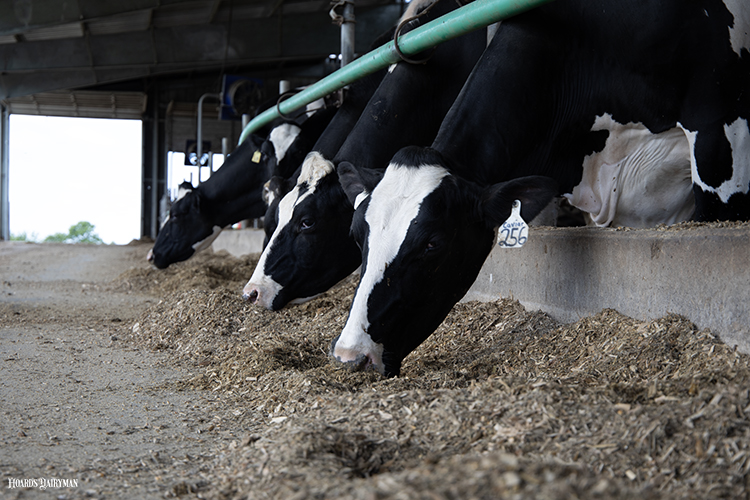
More now than ever, milk margins have caused dairy producers to find the most affordable ration available while not sacrificing production. One area to gain positive traction is improvement in fiber degradation as it unlocks nutrients in your homegrown forages to fuel the lactation.
Jeffrey Firkins of The Ohio State University was interviewed to help understand what’s happening in the rumen when branch-chained volatile fatty acids (BCVFA) and valerate are fed to lactating cows on “Dairy Science Digest” — a monthly podcast from the University of Missouri.
“Overall, what we saw was an improvement in feed efficiency defined as energy-corrected milk divided by intake,” he said. “Cellulolytic species of bacteria require BCVFA because they lack the ability to make their own.”
The cellulolytic bacteria species in the rumen are responsible for breaking down fiber into energy units to support milk production. Also, the flow of these bacteria out of the rumen provides a source of metabolizable protein — protein created within the cow from rumen-degraded protein with an amino acid composition that closely matches the cow’s needs, especially for lysine and methionine.
Membranes inside these fiber degrading bacteria change when BCVFAs are present in the rumen. The fatty acids from elongated BCVFA allow the cellular membrane to become more fluid or “squishy” — permitting nutrients to flow in and out of the membrane. Ultimately, the cell can get what it needs to grow more efficiently and therefore results in improved digestive efficiency for the cow consuming fibrous products.
What are branch-chained volatile fatty acids?
Branch-chained volatile fatty acids (BCVFAs), also commonly known as isoacids, are responsible for promoting the growth of fiber-degrading bacteria in the rumen. The production of BCVFA naturally occurs in the rumen through the breakdown of branch-chained amino acids (BCAA) when rumen-degraded protein is freely available or in excess. Isoacids have been known to help digestion of cattle for many decades. However, feeding had been limited due to their pungent odor that stunted intake.
However, research has identified a way to mask the odor of isoacids, eliminating the palatability issue and affording the opportunity to supplement when feeding a protein lean ration. The project investigated supplementing 2-methylbutyrate, isobutyrate, and isovalerate to the mid-lactation cow.
When protein is limiting
Nitrogen, the building block of protein, has recently been a target for many dairy farms to reduce to improve both environmental footprint and bottom line – as protein tends to be the most expensive ingredient in a dairy cow’s ration.
Through improved nitrogen efficiency, dairy farms have experienced similar production with lower protein diets. However, there’s a lower limit.
“If you starve your rumen of nitrogen, you’re not going to get value out of [feeding] BCVFA,” Firkins cautioned. “It’s not a silver bullet, [rather] a way to complement what the rumen would otherwise be providing when feeding a lower protein environment — but we can’t lower it too much or we’re not going to see the effect.” This research ration was formulated for 16%.
Additionally, no response would be expected if you’re feeding a high protein ration because BCVFA are made naturally in the rumen when sufficient amino acid and ammonia “building blocks” are present.
Improvement possibilities
The mature Jersey herd in Firkins’ research responded differently than first calf heifers. Protein percentage climbed and fat tended to increase for mature cows when the BCVFAs were fed, all while intake stayed the same.
Firkins referenced the research literature completed in the lab to help describe a possible reason for this improved efficiency. “An improvement in fiber digestion provides more acetate to make more milkfat,” he explained. “Mature cows route [nutrients] toward the milk; first-lactation cows seem to route it more toward growth.”
Ultimately, each ration is unique in the composition of protein and energy. These nutrients will shift and dictate the way the rumen microorganisms complete digestion for the cow. Additionally, the stage of lactation and farm forage inventories also play a role in the impact and possible successes integrating BCVFAs in your ration might provide. Work closely with your nutritionist to determine what additives might be helpful for your operation. To hear more about this topic, listen in at “Dairy Science Digest” on your favorite podcast platform.








